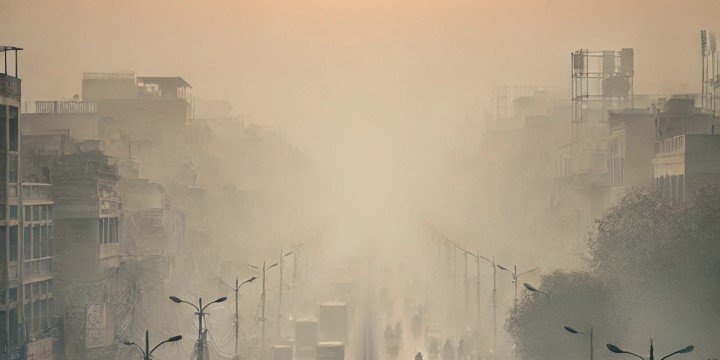Delhi AQI Remains in ‘Severe’ Zone
Delhi continues to grapple with hazardous air pollution, as the Delhi AQI (Air Quality Index) stayed in the “severe” category for the fifth consecutive day on Sunday. At 7 am, the city recorded an AQI of 428, with Bawana registering the highest level at 471. The thick smog led to visibility dropping to 800 meters at Indira Gandhi International (IGI) Airport, causing delays for 107 flights and the cancellation of three, according to Flightradar.
Delhi wakes up to thick smog, air quality remains in ‘severe’ category
Read @ANI Story | https://t.co/RbxT3a96q8 #Delhi #AQI #Severeairquality pic.twitter.com/bnfp9bPFGM
— ANI Digital (@ani_digital) November 17, 2024
Delhi AQI has consistently been in the “severe” or “severe plus” categories since Wednesday, apart from a brief reprieve on Friday afternoon. Data from the weather department shows that 22 out of Delhi’s 35 air quality monitoring stations reported AQI levels exceeding 400, reflecting dangerously high pollution levels across the capital.
Bawana topped the pollution charts at 471, followed closely by Ashok Vihar and Jahangirpuri at 466. Other areas such as Mundka and Wazirpur also reported hazardous AQI levels of 463. Prominent locations like Anand Vihar, Shadipur, and Vivek Vihar recorded AQIs of 457, while Rohini and Punjabi Bagh saw slightly lower yet still severe readings of 449 and 447, respectively.
VIDEO | Dense fog envelops parts of the national capital. The Air Quality Index remains in the ‘severe’ category for 5th consecutive day. Visuals area from India Gate area.
(Full video available on PTI Videos – https://t.co/n147TvrpG7) pic.twitter.com/JJx24Q8Meu
— Press Trust of India (@PTI_News) November 17, 2024
The persistent toxic air has led to increasing health concerns among residents, with widespread reports of respiratory problems, eye irritation, and other pollution-related illnesses.
Neighboring Cities Also Affected
While Delhi struggles with severe pollution, neighboring areas in the National Capital Region (NCR) are also battling poor air quality. Noida and Gurugram recorded AQI levels of 308 and 307, respectively, categorized as “very poor.” Ghaziabad fared slightly worse with an AQI of 372, while Faridabad reported a relatively lower yet concerning AQI of 260.
School Closures in Haryana Amid Rising Smog
The impact of pollution extends beyond Delhi, with the Haryana government ordering the closure of primary schools in four districts: Gurugram, Rohtak, Sonipat, and Jhajjar. Classes up to grade 5 have shifted to online learning, as local authorities aim to shield young children from hazardous air.
Haryana’s education department has also empowered deputy commissioners in other districts to take precautionary measures as needed. If pollution levels worsen, schools in 10 additional cities, including Faridabad, Rewari, and Panipat, could also be closed.
Widespread Impact of Toxic Air
The smog blanketing Delhi and the NCR is causing severe disruptions across sectors. Apart from health concerns, the reduced visibility and hazardous air have led to significant travel delays. The aviation sector is particularly affected, with passengers facing long wait times and canceled flights at IGI Airport.
The situation has also reignited debates about pollution control measures and their implementation. Experts stress the need for long-term strategies, including reducing vehicular emissions, promoting green energy, and enhancing public transportation infrastructure, to address the worsening air quality in the region.
Health Concerns Mount
Doctors and health officials warn that sustained exposure to such high pollution levels can have serious consequences, particularly for vulnerable groups like children, the elderly, and those with pre-existing respiratory conditions. Residents are being advised to stay indoors, use air purifiers, and wear protective masks to minimize exposure to the toxic air.
Urgent Need for Action
The ongoing pollution crisis in Delhi underscores the urgent need for coordinated action across state and national levels. From stricter emission norms to enhanced public awareness campaigns, stakeholders must address both immediate concerns and long-term solutions to prevent such crises from recurring.
As Delhi remains enveloped in smog, the impact on daily life continues to grow, with residents and authorities bracing for more challenges in the days ahead.
Also See:
Jharkhand Phase 1 Assembly Polls Conclude
Vivek Ramaswamy’s Graduation Speech from 2003 Goes Viral
——————————————————————————-
It would mean the world to us if you follow us on Twitter, Instagram and Facebook. At Newscazt, we strive to bring you the latest news and stories from India, World, Business, Sports, Entertainment and more. Our team of experienced journalists and writers are committed to delivering accurate and unbiased news and analysis.





Indian Government should not politicise this issue and work towards society benefits